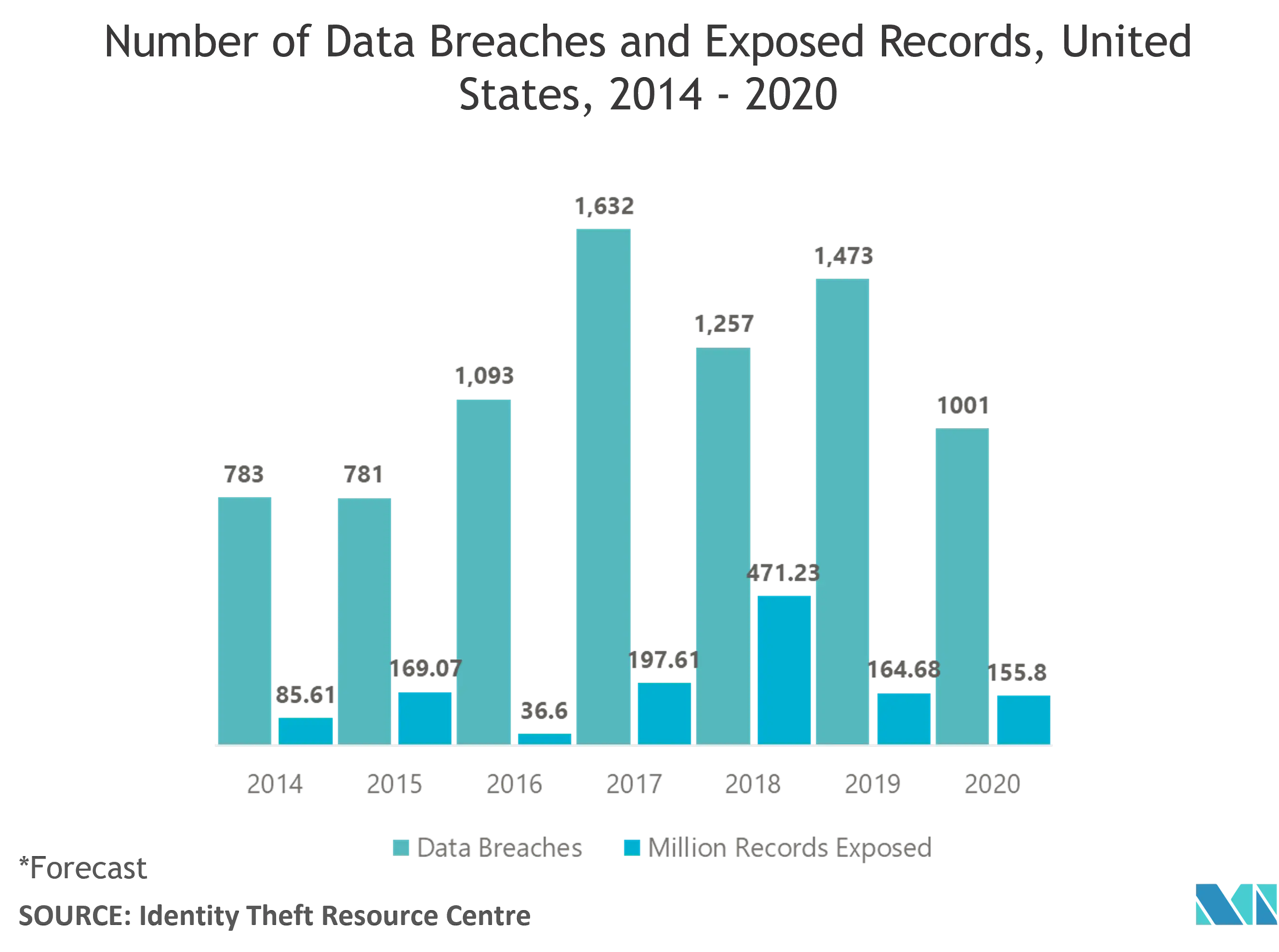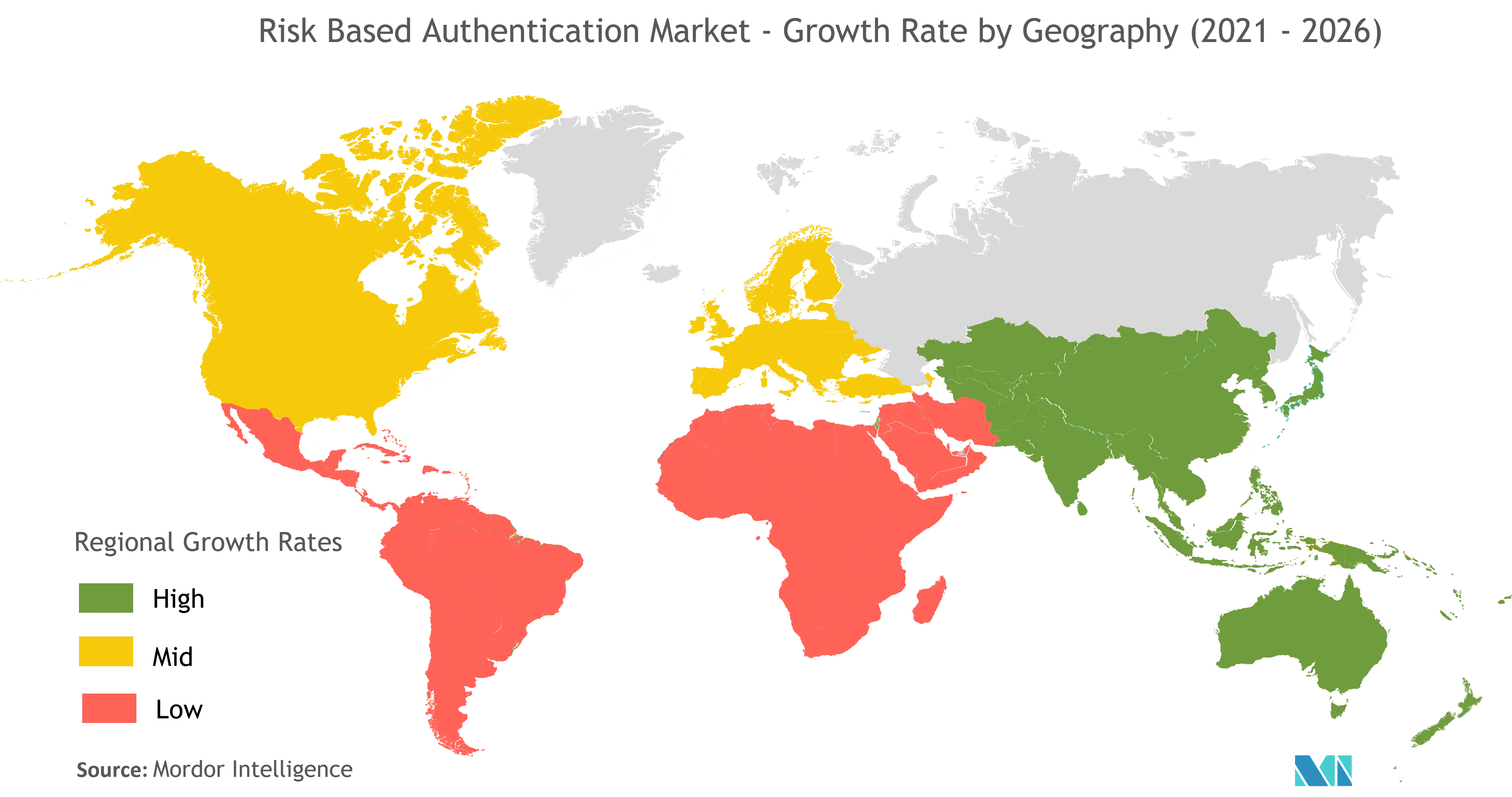Market Trends of Risk-based Authentication Industry
This section covers the major market trends shaping the Risk-based Authentication Market according to our research experts:
Banking and Financial Services Hold the Major Share
- Traditional banks have been turning to new and strategically focused agile institutions. The diverse challenges related to the ever-changing complex regulations, intense competition, and demanding customers have resulted in an alignment toward digital transformation.
- Consumer propensity toward banks that offer services with digitalization is increasing. According to a study by Lightico, in March 2020, around 82% of customers were concerned about visiting their branch in person, and 63% mentioned that they are willing to try the digital application. Thus, these shifts are expected to be long-lasting.
- With the growing popularity of digital banking and remote banking via call centers, the requirement for new and convenient ways to authenticate customer identity has been generated. Mobile and e-banking channels are increasingly used every day to transfer and perform transactions, which opens doors to cybercriminals trying to compromise a user’s account to extract money. The low-security level of traditional PINs due to customers forgetting their passcodes or being hacked due to phishing and other cybercrimes has led to the rise of more sophisticated authentication mechanisms, like risk-based authentication systems, in the industry.
- Several organizations and governing bodies, such as the Federal Financial Institutions Examination Council (FFIEC), New York State Department of Financial Services (NYDFS), and the Cybersecurity Regulation and National Association of Insurance Commissioners (NAIC), mandated the use of multi-factor authentication (MFA) to protect access to sensitive data for financial institutions, insurers, banks, and many other organizations.
- Data breaches lead to an exponential rise in costs and loss of valuable customer information. According to Identity Theft Resource Center, the number of data breaches in the United States increased from 784 in 2015 to 1,001 in 2020.
- Moreover, the BFSI sector is experiencing an increase in cloud workloads, where a significant amount of data is moved to the cloud. Furthermore, the rising integration of the third party, such as mobile wallets, coupled with complex security infrastructure where many vendors are deployed around the ecosystem, is creating a significant security challenge in the sector.

North American Expected to Hold Major Share
- The North American region led the market with the United States as the most prominent contributor to the region's market. The businesses in the region are increasingly dependent on computer networks and electronic data to conduct their regular operations. An increasing pool of personal and financial information is also transferred and stored online.
- This is because of the populous nature of the region in terms of organizational data, compared to other regions. Moreover, the United States currently accounts for the largest share in the adoption of cloud technologies and analytics and is expected to show the same trend in 2020.
- The substantial increase in the number of data breaches across various industries boosts companies to adopt robust authentication methods. For instance, according to the White House Council of Economic Advisers, the US economy faces losses of approximately USD 57 billion to USD 109 billion per annum, due to cyber-attacks.
- According to a statistic presented by Experian PLC, 31% of the data breach victims claimed the theft of their identity, like e-mail ids, passwords, credit/debit card numbers, etc. Also, Risk-based Security, an American firm, reported that 2020 has seen over 3,932 data breaches. When compared to 2019, the number of publicly reported breach events decreased by 48%, however, several records exposed exceeded 37 billion. These facts indicate the growing need for the adoption of a risk-based authentication solution in the country.
- Also, the governments in the region have been encouraging the usage of various authentication techniques. For instance, in April 2020, the US government gave federal agencies the flexibility to use alternative authentication forms to fulfill service gaps and achieve their goals. Agencies can make a risk determination and issue an alternate credential or authenticator for PIV eligible personnel. This is anticipated to augment the demand for the adoption of the market studied.

